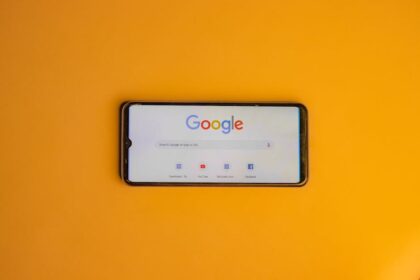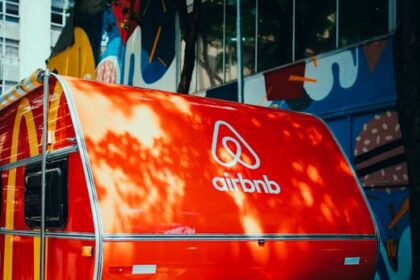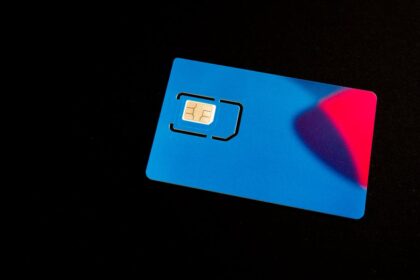Optimizing Core Web Vitals for Mobile is no longer a luxury but a fundamental requirement for online success. With mobile devices accounting for the vast majority of web traffic, ensuring an exceptional user experience on these platforms directly translates to improved search engine rankings, reduced bounce rates, higher conversion rates, and ultimately, a more robust digital presence. Google’s emphasis on Core Web Vitals (CWV) as ranking signals underscores the criticality of mobile performance. These metrics – Largest Contentful Paint (LCP), First Input Delay (FID), and Cumulative Layout Shift (CLS) – collectively measure the loading speed, interactivity, and visual stability of a webpage, all of which are amplified in their impact on mobile users who often contend with slower networks and less powerful hardware.
Understanding the unique challenges of mobile environments is the first step toward effective optimization. Mobile devices often operate on cellular networks, which can be inconsistent in speed and reliability compared to broadband connections. Device processing power and memory capacity vary wildly, meaning a site that loads quickly on a high-end smartphone might struggle on an older, budget device. Screen sizes are smaller, demanding efficient use of space and responsive design. These factors necessitate a focused, mobile-first approach to CWV optimization, ensuring that every byte and every script is scrutinized for its impact on the mobile user experience.
Tools for measuring Core Web Vitals on mobile are indispensable. Google PageSpeed Insights (PSI) is a primary tool, providing both lab data (simulated conditions from Lighthouse) and field data (real-user data from the Chrome User Experience Report, CrUX). Lighthouse, integrated into Chrome DevTools, offers detailed audits for performance, accessibility, best practices, and SEO, giving actionable recommendations. Google Search Console provides a dedicated Core Web Vitals report, showing aggregated field data for your site’s pages, categorizing them as “Good,” “Needs improvement,” or “Poor.” Analyzing these reports for mobile-specific issues is crucial, as performance often differs significantly from desktop. Understanding the distinction between lab data, which provides consistent, repeatable results under controlled conditions, and field data, which reflects actual user experiences, is vital. Lab data helps pinpoint specific technical issues in development, while field data confirms whether those fixes are translating to improved real-world performance for mobile users across diverse network conditions and devices.
Largest Contentful Paint (LCP) Optimization for Mobile
Largest Contentful Paint (LCP) measures the time it takes for the largest content element in the viewport to become visible. For mobile users, a slow LCP can be particularly frustrating, leading to early abandonment. Good LCP for mobile is typically below 2.5 seconds. The largest content element is often an image, video, or a large block of text. Identifying this element is key, usually through Lighthouse audits. Common causes of poor LCP on mobile include slow server response times, render-blocking JavaScript and CSS, slow resource load times, and client-side rendering issues.
Server Response Time (Time to First Byte – TTFB) Optimization
A slow Time to First Byte (TTFB) directly impacts LCP. For mobile users, every millisecond counts, especially on less reliable networks.
- Efficient Server Infrastructure: Ensure your hosting environment is robust and scales with traffic. Utilize powerful CPUs and ample RAM. Dedicated servers or high-performance VPS options are preferable for high-traffic sites.
- Content Delivery Networks (CDNs): CDNs cache your content on servers geographically closer to your mobile users, drastically reducing latency and TTFB. For image-heavy mobile sites, a CDN specifically optimized for image delivery can be transformative.
- Server-Side Caching: Implement strong server-side caching mechanisms (e.g., Varnish, Redis, Memcached). This reduces the load on your database and application, allowing the server to respond faster to requests from mobile devices.
- Database Optimization: Slow database queries can significantly delay TTFB. Optimize your database schema, index frequently queried columns, and minimize complex joins. For mobile applications with dynamic content, efficient database operations are paramount.
- HTTP/2 and HTTP/3: Ensure your server supports and utilizes HTTP/2, or ideally, the newer HTTP/3 (QUIC). These protocols improve multiplexing and reduce overhead, leading to faster initial connection and resource loading, especially beneficial for mobile users with potentially higher packet loss.
Resource Prioritization and Preloading
Mobile devices have limited bandwidth and processing power. Efficient resource loading is crucial.
- Preload Critical Resources: Use
to tell the browser to download high-priority resources (like your LCP image, critical fonts, or CSS) early in the loading process. This is particularly effective for mobile, ensuring the most important content appears quickly. Example: fetchpriority="high"for LCP Element: On the LCP image or video element itself, addfetchpriority="high"to further signal its importance to the browser. This is an emerging standard that can significantly accelerate LCP rendering for mobile.preconnectanddns-prefetch: For third-party domains (e.g., CDN, analytics, fonts), useto establish early connections. For DNS resolution,can slightly speed up lookups, which is useful on mobile where DNS latency can be a factor.
Image Optimization for Mobile
Images are often the LCP element on mobile. Their optimization is critical.
- Responsive Images (
srcset,sizes): Do not serve large desktop images to mobile devices. Usesrcsetandsizesattributes to serve appropriately sized images based on the user’s viewport and device pixel ratio. This dramatically reduces download size.
Example:
- Modern Image Formats (WebP, AVIF): Convert images to modern formats like WebP or AVIF. These formats offer superior compression without significant quality loss, resulting in much smaller file sizes. Use the
element for fallback for older browsers.
Example:
- Lazy Loading: Implement native lazy loading (
loading="lazy") for images and iframes that are below the fold. This prevents non-critical resources from competing with LCP for bandwidth. Crucially, ensure the LCP image is NOT lazy-loaded. - Image CDNs and Compression Services: Use services that automatically optimize, resize, and convert images to the most efficient format based on the user’s device and browser. This offloads the complexity of manual optimization.
- Vector Graphics (SVGs): For logos, icons, and simple illustrations, use Scalable Vector Graphics (SVGs). They are resolution-independent and typically have small file sizes. Minify SVGs to remove unnecessary metadata.
Font Optimization
Custom fonts can be large and cause render-blocking issues and layout shifts if not handled correctly.
font-displayProperty: Usefont-display: swaporfont-display: optional.swapdisplays a fallback font immediately and swaps it once the custom font loads, preventing text invisibility (FOIT) and reducing LCP impact.optionaluses the fallback if the custom font isn’t available quickly, ideal for performance-sensitive mobile sites.- Preload Critical Fonts: Use
for fonts critical to the initial page view. This ensures the browser fetches them early. - Self-Hosting Fonts: If possible, self-host your fonts to eliminate external DNS lookups and connection overhead. Serve them from your CDN for optimal delivery.
- Subsetting Fonts: Remove unused glyphs, styles, or language characters from your font files. This significantly reduces file size, especially for internationalization.
CSS Optimization
Render-blocking CSS delays LCP.
- Minify CSS: Remove all unnecessary characters (whitespace, comments) from CSS files.
- Critical CSS: Extract the “above-the-fold” CSS and inline it directly into the HTML. This allows the browser to render the visible content immediately without waiting for external CSS files to download. Tools like
criticalorpenthousecan automate this. - Remove Unused CSS: Audit your CSS for rules that are not used on the page. Tools like Chrome DevTools’ Coverage tab can help identify this. Remove or defer these unused styles.
- Defer Non-Critical CSS: Load less critical CSS asynchronously or after the initial render. Using
or JavaScript-based loaders can achieve this. - Avoid
@import: Using@importin CSS creates additional request chains and is less performant thantags.
JavaScript Optimization
Excessive or poorly optimized JavaScript can block the main thread, delaying LCP and other metrics.
- Minify and Compress (Gzip/Brotli): Reduce JavaScript file sizes by minifying and serving them with Brotli or Gzip compression.
- Defer Non-Critical JavaScript: Use the
deferattribute for scripts that don’t need to execute immediately or aren’t essential for the initial render. Deferred scripts execute after HTML parsing is complete. - Asynchronous Loading (
async): For scripts that can run independently and don’t modify the DOM structure during parsing (e.g., analytics, ads), use theasyncattribute. These scripts download in parallel and execute as soon as they are available, without blocking HTML parsing. - Remove Unused JavaScript (Tree Shaking, Code Splitting): Use build tools (Webpack, Rollup) to perform tree shaking, eliminating dead code. Implement code splitting to break large JavaScript bundles into smaller chunks that are loaded on demand. This is particularly beneficial for complex single-page applications (SPAs) on mobile.
- Third-Party Script Management: Audit all third-party scripts (ads, analytics, social widgets). These can be major performance bottlenecks.
- Load Strategically: Load them with
asyncordeferwhen possible. - Host Locally: If a script is small and frequently updated, consider hosting it locally to avoid external DNS lookups and HTTP requests.
- Delay Loading: For non-essential scripts, load them only after a user interaction or after the initial page has fully rendered.
- Use
preconnectanddns-prefetch: As mentioned earlier, for external script domains.
- Load Strategically: Load them with
Optimizing DOM Size
An excessively large or deep DOM tree can negatively impact LCP and other metrics by increasing render time.
- Flat DOM Structure: Aim for a relatively flat DOM structure. Reduce the number of nested elements. Each DOM node adds overhead to parsing, styling, and layout.
- Server-Side Rendering (SSR) or Static Site Generation (SSG): For dynamic content, consider SSR or SSG. This generates the HTML on the server, reducing the amount of JavaScript needed for initial rendering and improving LCP. This is particularly effective for mobile, providing fully formed HTML early in the load process.
- Avoid Complex CSS Selectors: Overly complex CSS selectors can increase the time it takes for the browser to calculate styles.
First Input Delay (FID) Optimization for Mobile
First Input Delay (FID) measures the time from when a user first interacts with a page (e.g., clicks a button, taps a link) to the time when the browser is actually able to respond to that interaction. A low FID indicates that the page is responsive and interactive quickly. For mobile users, responsiveness is paramount, as they expect immediate feedback from touch gestures. A good FID is typically less than 100 milliseconds. FID is primarily affected by main thread blocking, which occurs when the browser’s main thread is busy executing JavaScript, making it unable to respond to user input. Total Blocking Time (TBT) is a good lab proxy for FID, measuring the sum of all time periods between Long Tasks where the main thread was blocked for more than 50ms.
Break Up Long JavaScript Tasks
Long-running JavaScript tasks are the primary culprits for poor FID.
- Chunking and Debouncing: Break down large, synchronous JavaScript tasks into smaller, asynchronous chunks. This allows the browser to periodically yield to the main thread, giving it opportunities to respond to user input.
requestAnimationFrameandrequestIdleCallback:requestAnimationFrame: Ideal for tasks that need to run before the next repaint, like animations. It ensures your code runs at the optimal time for smooth visuals.requestIdleCallback: Schedules a function to run when the browser is idle, providing a way to perform non-essential, lower-priority work without impacting interactivity. Use it for background tasks, analytics sending, or pre-rendering.
- Web Workers: Offload computationally intensive JavaScript tasks to Web Workers. Web Workers run in a separate thread, preventing them from blocking the main thread and improving FID. This is particularly useful for complex calculations, data processing, or image manipulation on mobile devices where CPU resources are often limited.
Reduce JavaScript Execution Time
Minimizing the amount of JavaScript the browser needs to parse, compile, and execute directly improves FID.
- Code Splitting: As mentioned for LCP, break your JavaScript bundles into smaller, on-demand chunks. Load only the code required for the current view. This reduces initial parse and execution time.
- Tree Shaking: Eliminate dead code from your JavaScript bundles. Modern build tools automatically do this, ensuring only necessary code is shipped to the browser.
- Remove Unused Libraries and Features: Audit your dependencies. If you’re only using a small part of a large library, consider finding a lighter alternative or implementing only the necessary functionality yourself.
- Efficient Algorithms and Data Structures: Write optimized JavaScript code. Avoid inefficient loops, redundant calculations, or large synchronous operations. Profile your JavaScript using Chrome DevTools Performance tab to identify bottlenecks.
- Progressive Hydration for SPAs: For client-side rendered applications, instead of hydrating the entire application at once, progressively hydrate components as they become visible or interactive. This reduces the initial JavaScript execution burden on the main thread, improving FID for mobile users.
Optimize Third-Party Scripts
Third-party scripts are notorious for blocking the main thread and degrading FID.
- Audit and Prioritize: Understand what each third-party script does and its necessity. Prioritize essential scripts and defer or remove non-essential ones.
- Load Asynchronously/Defer: Always use
asyncordeferfor third-party scripts. This prevents them from blocking HTML parsing and JavaScript execution. - Establish Early Connections: Use
preconnectanddns-prefetchfor domains hosting third-party scripts to reduce network latency. - Delay Loading until User Interaction: For scripts like chat widgets, consent banners, or video embeds that aren’t critical for initial content, load them only when the user interacts with them or after a delay.
- Host Locally (with caution): If a third-party script is small and stable, self-hosting it can reduce external requests. However, be mindful of update management and terms of service.
- Use Facades for Embeds: Instead of embedding an entire YouTube player or social media widget immediately, load a lightweight “facade” (e.g., an image with a play button) and only load the full embed when the user clicks on it. This significantly reduces initial JavaScript load and execution.
Minimize Main Thread Work
Beyond JavaScript, other tasks can tie up the main thread.
- Reduce Layout Thrashing: Avoid repeatedly reading and writing DOM properties that trigger layout recalculations. Batch your DOM reads and writes.
- Avoid Complex CSS Animations: While CSS animations are generally more performant than JavaScript animations, poorly optimized ones can still cause main thread work. Prefer
transformandopacityfor animations, as they can often be handled by the compositor thread, offloading work from the main thread. Avoid animating properties that trigger layout or paint. - Limit
document.write(): Avoid usingdocument.write(), especially after the initial page load, as it can force the browser to re-parse the entire document and block rendering. - Large and Complex CSS: While CSS parsing is generally fast, extremely large or complex CSS files can contribute to main thread blocking during initial style calculations. Optimizing CSS, as mentioned for LCP, also benefits FID.
Cumulative Layout Shift (CLS) Optimization for Mobile
Cumulative Layout Shift (CLS) measures the sum of all unexpected layout shifts that occur during the lifespan of a page. A good CLS score is 0.1 or less. Unexpected shifts are jarring and frustrating for mobile users, leading to misclicks and a poor user experience. Imagine trying to tap a button on your phone, only for an ad to suddenly appear above it, pushing the button out of reach. This is the essence of a poor CLS score.
Always Specify Dimensions for Images and Videos
This is the most common cause of layout shifts.
widthandheightAttributes: Always includewidthandheightattributes ontags. This allows the browser to reserve the necessary space before the actual media loads.
Example:
- CSS Aspect Ratio Boxes: For more responsive control, especially with modern CSS, use CSS to define the aspect ratio of an element before its content loads. This is achieved using the
padding-toptrick or the neweraspect-ratioCSS property.
Example (padding-top):
.image-container { width: 100%; padding-top: 66.66%; /* (height / width) * 100% for a 3:2 ratio */ position: relative; } .image-container img { position: absolute; top: 0; left: 0; width: 100%; height: 100%; display: block; }Example (aspect-ratio, modern browsers):
img { aspect-ratio: 3 / 2; /* or use explicit pixel values like 600 / 400 */ width: 100%; height: auto; } - For Dynamically Sized Images: If image dimensions are unknown (e.g., user-uploaded content), pre-analyze them on the server or use a placeholder that matches common aspect ratios.
Handle Ads, Embeds, and Iframes Carefully
These are frequent sources of layout shifts, especially on mobile, where screen real estate is limited.
- Reserve Space for Ads: Before an ad loads, reserve sufficient space for it using a placeholder
divwith a fixedwidthandheightormin-height. - Negotiate Dimensions: Work with your ad network or embed provider to understand the dimensions of the ads/embeds that will be served and reserve corresponding space.
- Dynamically Sized Slots: If ad slots can vary in size, consider using the largest possible size as a fallback or implementing historical data to predict common ad sizes.
- Load Ads/Embeds Below the Fold: If possible, load non-critical ads or embeds further down the page where their layout shifts are less likely to impact the user’s immediate interaction with the main content.
- Sticky Ads: Be mindful of sticky or anchor ads that appear fixed on the screen. While they don’t cause layout shifts in the traditional sense, they can still cover important content and detract from the user experience if not implemented carefully.
Avoid Dynamically Injected Content
Content that gets injected into the DOM after the initial render without explicit space reservation is a major CLS culprit.
- Notification Banners/Pop-ups: If a banner or pop-up appears at the top of the page, it will push down existing content.
- Solution: Reserve space for them with CSS (e.g.,
min-height), or overlay them on top of content (usingposition: fixedorposition: absolute) instead of inserting them into the document flow. If they must be in-flow, ensure they are present from the initial render, even if hidden and then revealed.
- Solution: Reserve space for them with CSS (e.g.,
- Consent Banners: Similar to notification banners, ensure consent banners are either pre-allocated space or are overlaid.
- Lazy-Loaded Content: When lazy loading content, ensure there’s a placeholder element that maintains the space of the content before it loads. Skeleton screens are an excellent solution here.
Web Fonts Causing FOIT/FOUT
Flash of Invisible Text (FOIT) or Flash of Unstyled Text (FOUT) due to web fonts can cause CLS if the fallback font has different metrics than the custom font.
font-display: optionalorfont-display: swap:swap: Renders with a fallback font immediately and swaps to the custom font once loaded. This prevents FOIT but can cause a shift if font metrics differ significantly.optional: Provides an extremely short block period (100ms) and then renders the fallback. If the custom font loads within that window, it’s used. Otherwise, the fallback is kept for the session. This minimizes CLS by avoiding font swaps.
- Preload Critical Fonts: Preloading fonts (as discussed for LCP) ensures they are available sooner, reducing the time for potential swaps.
size-adjust,ascent-override,descent-override,line-gap-override: These advanced CSS@font-facedescriptors allow you to adjust the metrics of your custom font to match a fallback font more closely, effectively reducing or eliminating CLS caused by font swaps. This requires careful measurement of fallback font metrics.
Use CSS Transforms for Animations
Animations that change properties like width, height, padding, margin, or top/left (without position: absolute or fixed contexts) will trigger layout recalculations, leading to CLS.
- Prefer
transformandopacity: These properties can be animated by the browser’s compositor thread and do not trigger layout or paint, making them much smoother and preventing layout shifts.
Example: Instead of animatingleftfor a slide-in effect, animatetransform: translateX().
Implement Skeleton Screens or Placeholders
For dynamically loaded content or data that fetches after initial page load, skeleton screens (grey boxes representing the structure) or simple placeholders can reserve the space and prevent shifts when the actual content arrives. This provides a smoother visual experience for mobile users.
Ensure Critical CSS is Loaded First
If CSS that defines the layout of above-the-fold content loads late, the page may render unstyled, then shift as the styles are applied. Inlining critical CSS (as discussed for LCP) ensures the initial layout is stable.
Holistic Mobile Optimization Strategies Affecting All CWVs
While optimizing each CWV metric individually is important, many strategies provide synergistic benefits across all three, especially on mobile.
Responsive Design Best Practices
A truly responsive design is foundational for mobile CWV.
meta viewportTag: Always include. This ensures the page scales correctly to the device width, preventing horizontal scrolling and improving user experience.- Flexible Units: Use relative units like
em,rem,vw,vh, and percentages (%) for layouts, fonts, and images instead of fixed pixel values. This allows content to adapt fluidly to different screen sizes. - Media Queries: Use CSS media queries to apply specific styles for different screen sizes, orientations, and resolutions. This ensures content is optimally presented and images are correctly sized for mobile viewports.
- Touch-Friendly Elements: Ensure buttons, links, and interactive elements have sufficient size and padding for easy tapping on touchscreens, preventing misclicks which can impact perceived responsiveness. Google recommends a minimum tap target size of 48 CSS pixels.
Caching Strategies
Effective caching reduces redundant data transfers and processing.
- Browser Caching (HTTP Caching): Implement appropriate
Cache-Controlheaders for all static assets (images, CSS, JS, fonts). Long cache durations (max-age,immutable) for unchanging resources allow mobile browsers to serve them instantly on repeat visits without re-downloading. - CDN Caching: CDNs not only reduce TTFB but also cache static content closer to users, improving loading times for subsequent visits and new users alike.
- Server-Side Caching: As mentioned for LCP, robust server-side caching reduces the load on your server, speeding up response times for all requests, including those from mobile devices.
- Service Workers (for PWAs): Service Workers enable programmatic caching, allowing you to intercept network requests and serve assets from a cache even when offline. This is transformative for repeat mobile visits, delivering near-instantaneous loads and providing true offline capability.
Network Optimization
Optimizing how your site interacts with the network is crucial, especially for mobile’s varied network conditions.
- HTTP/2 and HTTP/3: Ensure your server and CDN support and leverage these modern protocols. Their multiplexing capabilities and reduced overhead significantly improve concurrent resource loading without blocking, benefiting all CWVs. HTTP/3 further reduces connection overhead and improves performance on lossy mobile networks due to its UDP-based transport.
- Preconnect, DNS-Prefetch, Prefetch, Prerender:
preconnect: Establishes an early connection to critical third-party origins (e.g., analytics, fonts, CDN).dns-prefetch: Resolves DNS for future domains in advance.prefetch: Fetches resources that are likely to be needed for future navigations. Use judiciously to avoid wasting mobile data.prerender: Fetches and renders an entire page in the background, making navigation to it almost instant. Use with extreme caution and only for highly probable next pages, as it consumes significant bandwidth and resources.
- Reduce Number of Requests: Every HTTP request has overhead. Combine CSS and JavaScript files where appropriate (though consider HTTP/2’s multiplexing, which makes this less critical for smaller files). Use CSS sprites for icons. Embed small images as data URIs (but be cautious with larger ones, as they prevent caching).
Mobile-First Indexing Implications
Google’s mobile-first indexing means the mobile version of your site is the primary one used for ranking. This elevates the importance of mobile CWV from a mere recommendation to a direct ranking factor. Any discrepancies in content, internal linking, or performance between your desktop and mobile versions can have a significant impact. Ensure the mobile version of your site is complete, high-quality, and performs exceptionally well.
Accessibility Considerations
While not a direct CWV metric, accessibility greatly impacts user experience, especially on mobile. Accessible designs often align with good performance.
- Semantic HTML: Use semantic HTML elements correctly (e.g.,
button,nav,main). This helps assistive technologies and also implies a well-structured DOM, which benefits performance. - Keyboard Navigation: Ensure all interactive elements are reachable and operable via keyboard, which is also relevant for some mobile assistive technologies.
- Color Contrast: Ensure sufficient color contrast for readability on smaller mobile screens and varying ambient light conditions.
- ARIA Attributes: Use ARIA attributes where necessary to enhance the semantics of non-native HTML elements.
Performance Budgeting for Mobile
Set strict performance budgets for your mobile site.
- JavaScript Budget: Define a maximum JavaScript bundle size (e.g., 150KB gzipped).
- CSS Budget: Set a limit for CSS file size (e.g., 50KB gzipped).
- Image Budget: Establish a total image weight budget for above-the-fold content.
- Request Budget: Limit the number of HTTP requests for critical rendering path resources.
- Time Budget: Define a target LCP, FID, and CLS that you aim to stay within for your critical mobile pages.
These budgets force you to make conscious decisions about every asset and script you add to your site, preventing performance bloat over time. Integrate budget checks into your CI/CD pipeline.
Regular Monitoring and Iteration
Performance optimization is an ongoing process.
- Automated Testing: Use Lighthouse CI or similar tools in your development workflow to catch performance regressions early.
- Field Data Analysis: Regularly review your Google Search Console CWV report and CrUX data for real-world performance insights. Segment by device type, connection type, and country to identify specific mobile performance bottlenecks.
- A/B Testing: Test different optimization strategies with small user groups to measure their actual impact on CWV and user engagement before full deployment.
- User Feedback: Solicit and analyze user feedback specifically about mobile experience and speed.
Specific Mobile-Centric Challenges and Solutions
Mobile devices present unique challenges that require tailored solutions.
Varying Network Conditions
Mobile users access your site on a wide spectrum of network speeds and reliabilities, from blazing-fast 5G to spotty 3G.
- Network Throttling: Test your site using network throttling in Chrome DevTools to simulate 3G or 4G conditions. This reveals how your site performs under real-world constraints.
- Progressive Enhancement: Build your core functionality to work on slow networks and basic devices, then progressively add enhancements for faster connections and more capable devices.
- Adaptive Loading: Consider techniques like Network Information API to dynamically load different versions of assets (e.g., lower-resolution images) or fewer features based on the user’s current network speed.
- Offline First (PWAs): For critical applications, an offline-first approach using Service Workers ensures a baseline experience even with no network connection, which is invaluable for mobile users.
Device Fragmentation
The sheer variety of mobile devices – different screen sizes, resolutions, processing power, and browser versions – means your site needs to be robustly designed.
- Responsive Images (Revisited): This is paramount. Do not serve a 2000px wide image to a phone with a 360px wide screen.
- Viewport Units and Media Queries: Ensure layouts are fluid and adapt gracefully to all screen dimensions, from small phones to large tablets in portrait and landscape.
- Performance Budgets (Revisited): Apply budgets rigorously to ensure even less powerful devices can render your site quickly.
- Avoid JavaScript Polyfills for Older Devices if not Critical: Only polyfill features if absolutely necessary for your target audience; they add overhead. Focus on modern browser support and graceful degradation.
Touch Interactions
Mobile users primarily interact via touch.
- Tap Target Size: Ensure all interactive elements (buttons, links, form inputs) are large enough and have sufficient spacing to be easily tappable by a finger. Google recommends at least 48×48 CSS pixels.
- Hover States: Design alternative visual feedback for elements that typically rely on hover states on desktop, as hover doesn’t exist on touchscreens. This might involve a subtle touch-down effect or a different visual cue for active elements.
cursor: pointerfor Buttons/Links: While not directly affecting CWV, ensuring propercursorstyling (even on mobile where a cursor isn’t present) improves perceived interactivity for testing and consistency.- Preventing Double Taps and Zooms: Configure your viewport meta tag correctly to prevent unwanted double-tap zoom behavior. Use
touch-action: manipulationfor elements if you need to optimize for specific touch interactions, but use with caution.
Progressive Web Apps (PWAs) and their CWV Benefits
PWAs offer a powerful pathway to exceptional mobile CWV.
- Service Workers: The cornerstone of PWAs. They enable caching of static assets and dynamic content, leading to instant loads on repeat visits (improving LCP and FID) and providing offline capabilities. They can intercept network requests and serve content from cache, minimizing network reliance.
- Web App Manifest: Provides metadata for adding the PWA to the home screen, creating an app-like experience.
- Push Notifications: Engage users without needing a native app.
- App Shell Model: Separate your application’s shell (UI, core elements) from its content. Cache the shell via a Service Worker for immediate loading, then progressively load content. This significantly boosts LCP and perceived performance on mobile.
Accelerated Mobile Pages (AMP)
AMP is an open-source framework designed to create fast-loading mobile pages.
- Strict Constraints: AMP enforces strict rules on HTML, CSS, and JavaScript, ensuring pages load incredibly fast by leveraging pre-rendering and highly optimized components.
- Google AMP Cache: AMP pages served from Google’s AMP Cache are often pre-fetched and pre-rendered, leading to near-instantaneous load times from Search results.
- Trade-offs: While excellent for CWV, AMP comes with design and functionality limitations due to its strict nature. It might not be suitable for all types of websites or complex web applications. Evaluate if its benefits outweigh its constraints for your specific mobile content.
User Expectations on Mobile
Mobile users have higher expectations for speed and responsiveness.
- Instantaneous Load: Studies show users expect pages to load in 2 seconds or less. A delay of even a few hundred milliseconds can significantly increase bounce rates.
- Smooth Interaction: Any lag or jank during scrolling, tapping, or swiping is immediately noticeable and frustrating. FID and CLS are directly tied to these expectations.
- Focus on Core Content: Mobile users often want to quickly access information or complete a task. Prioritize delivering the most critical content and interactive elements as fast as possible.
By meticulously addressing each Core Web Vital with mobile-specific strategies and adopting a holistic approach to performance, web developers and site owners can transform the mobile user experience. This not only satisfies Google’s ranking criteria but, more importantly, fosters user loyalty, boosts engagement, and drives business success in an increasingly mobile-first world. Continuous monitoring, testing, and iteration are key to maintaining peak performance as technology and user expectations evolve.











